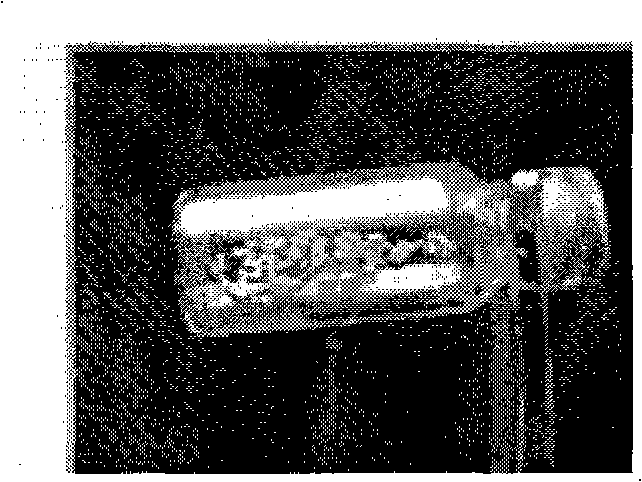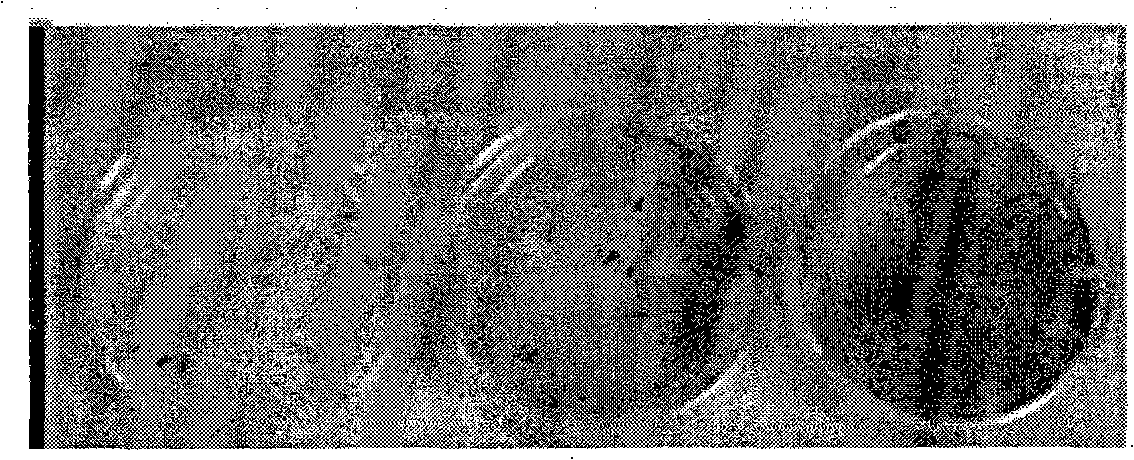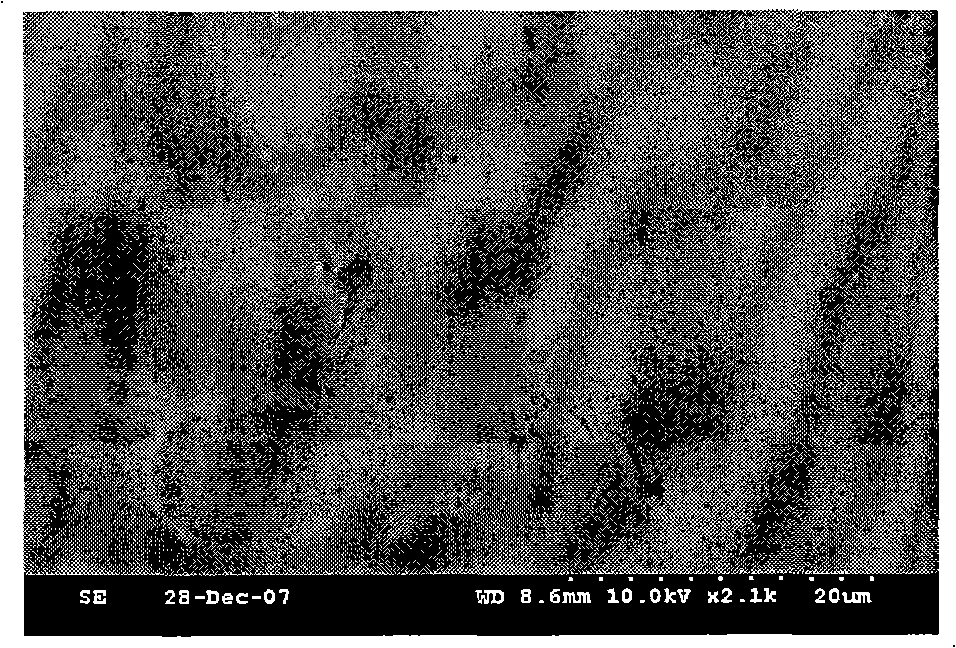Radionuclide particle implantation medicine for cancer, use and preparation method thereof
A particle and nuclide technology, which is applied in the field of implantation of nuclide particles for cancer treatment, can solve the problems of inability to exert anti-cancer effects, short drug action time, and limited treatment intensity, so as to reduce systemic side effects and standardize treatment. , improve the effect of survival
- Summary
- Abstract
- Description
- Claims
- Application Information
AI Technical Summary
Problems solved by technology
Method used
Image
Examples
Embodiment 1
[0046] A nuclide particle implant drug for cancer treatment: a composition formed by mixing a radionuclide capable of emitting beta rays and a biodegradable polymer material, the proportion of which is high in biodegradability per 0.9-1.1mg The molecular material is equipped with a radionuclide capable of emitting β-rays with a radioactivity of 18.5-37 MBq. In this embodiment, the radionuclide capable of emitting β-rays with a radioactivity of 18.5-37 MBq and a mass of 0.9-1.1 mg of biodegradable polymer materials can be mixed, or can be mixed according to the above ratio, and the ratio can be specifically selected as: every 0.9 mg of biodegradable polymer materials is mixed with a radioactive activity of 18.5MBq capable of emitting β radioactive nuclides; every 0.9 mg of biodegradable polymer material is equipped with a radionuclide that can emit β rays with a radioactivity of 37MBq; every 1.0mg of biodegradable polymer material is equipped with a radioactivity of 28MBq The r...
Embodiment 2
[0049] A nuclide particle implant drug for cancer treatment, the implant drug is composed of a mixture of radionuclide capable of emitting beta rays and a biodegradable polymer material, the proportion of which is 0.9-1.1 mg of biodegradable The active polymer material is equipped with a radionuclide capable of emitting β-rays with a radioactivity of 18.5-37MBq. In this embodiment, the radionuclide capable of emitting β-rays with a radioactivity of 18.5-37MBq and a mass of 0.9 ~1.1mg of biodegradable polymer materials can be mixed, or can be mixed according to the above ratio. Beta-ray-emitting radionuclides; every 0.9mg of biodegradable polymer materials with a radioactivity of 37MBq can emit beta-ray radionuclides; every 0.95mg of biodegradable polymer materials with radioactivity 25MBq of radionuclides capable of emitting β-rays, or, every 1.1mg of biodegradable polymer materials are mixed with radionuclides of 37MBq of radioactive activity capable of emitting β-rays.
[0...
Embodiment 3
[0054] 32 Application of P-CP and poly-L-lactic acid composition as nuclide particle implantation drug for treating malignant solid tumors.
PUM
 Login to View More
Login to View More Abstract
Description
Claims
Application Information
 Login to View More
Login to View More - R&D
- Intellectual Property
- Life Sciences
- Materials
- Tech Scout
- Unparalleled Data Quality
- Higher Quality Content
- 60% Fewer Hallucinations
Browse by: Latest US Patents, China's latest patents, Technical Efficacy Thesaurus, Application Domain, Technology Topic, Popular Technical Reports.
© 2025 PatSnap. All rights reserved.Legal|Privacy policy|Modern Slavery Act Transparency Statement|Sitemap|About US| Contact US: help@patsnap.com



